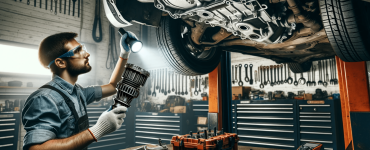Unraveling the Complexities of Transmission Repair: Rebuilding vs. Replacing
Key Takeaways Table:
| Rebuilding | Replacing |
|---|---|
| Cost-effective in the long run | Initially less time-consuming |
| Customizable to specific vehicle needs | May involve compatibility issues |
| Better for unique or old models | Newer components could extend lifespan |
| Lengthier process | Quick solution, not always durable |
The decision between rebuilding vs replacing a transmission is a pivotal crossroad in the journey of automotive repair. Each route offers distinct advantages and considerations that can significantly impact the performance and longevity of your vehicle.
Exploring the Route of Rebuilding a Transmission
The art of rebuilding a transmission involves meticulous disassembly, inspection, and replacement of worn-out parts. It’s akin to giving your vehicle’s transmission a second lease on life, custom-tailored to its unique specifications.
When to Consider Rebuilding?
- Vintage Charm: For classic or rare vehicles, where original parts preserve the vehicle’s integrity.
- Customization: When specific performance tweaks align with your driving demands.
- Cost-Effectiveness: Over time, investing in a rebuild can be more economical.
In-Depth Analysis:
A deep dive into the process reveals the complexity of rebuilding. It’s not merely about swapping out parts; it’s about restoring the transmission to meet or exceed original performance standards. For more insights on the intricacies of this process, explore our article on understanding the basics of transmission repair.
Choosing to Replace: A New Horizon
Conversely, replacing a transmission usually involves installing a new or remanufactured unit. It’s the fast lane to getting your vehicle back on the road, often with a straightforward approach.
Why Opt for Replacement?
- Time Constraints: If you need your vehicle running quickly.
- New Technology: Embracing advancements that come with newer models.
- Warranty Coverage: New units often come with a warranty, offering peace of mind.
Quick Look:
Replacement might sound simple, but it’s not without its pitfalls. Compatibility and quality assurance are just the tips of the iceberg. For a thorough understanding, consider reading about transmission repair techniques for manual vs. automatic repairs.

The Impact on Performance and Longevity
Whether you choose to rebuild or replace, the impact on your vehicle’s performance and durability is monumental. Rebuilt transmissions can be fine-tuned, while replacements can incorporate the latest engineering marvels. However, each choice has its trajectory in terms of performance outcomes and longevity.
Performance Considerations:
- Rebuilds: Potential to enhance performance with custom parts.
- Replacements: Predictable performance with new or standardized parts.
Longevity Expectations:
- Rebuilds: Extended lifespan if done correctly.
- Replacements: Varied, based on the quality of the new unit.
Financial Implications and Environmental Considerations
The decision also echoes in the realms of economics and environmental responsibility. Rebuilding is often seen as a more sustainable choice since it reduces waste and conserves resources. From a financial perspective, while replacements might seem less expensive upfront, rebuilds can offer more value over time.
Cost Analysis:
| Rebuilding | Replacing |
|---|---|
| Initial cost may be higher | Lower upfront cost |
| Long-term savings potential | Possible future costs |
Eco-Friendly Aspect:
- Rebuilding: Emphasizes reuse, aligning with green practices.
- Replacing: More waste generation, but newer models may be more eco-efficient.
Conclusion about rebuilding vs replacing
Navigating the decision between rebuilding and replacing a transmission requires a comprehensive understanding of the nuances involved. It’s not just about the immediate needs but also about the long-term implications for your vehicle’s performance and your wallet.




